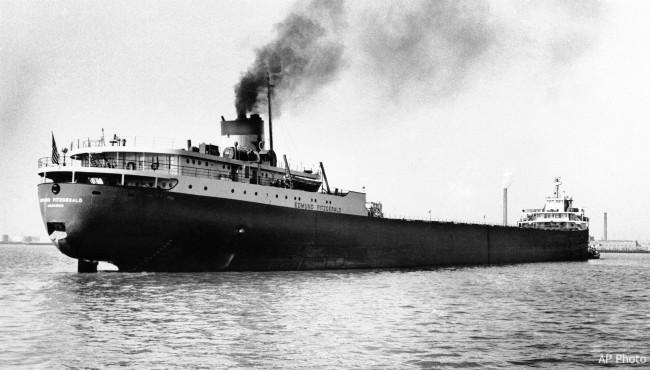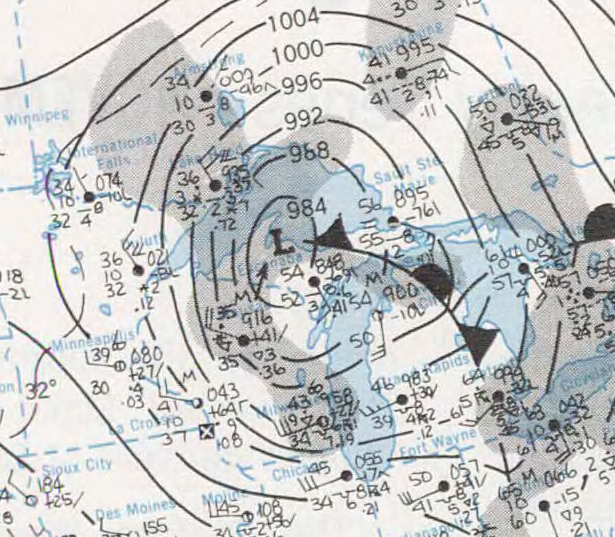GRAND RAPIDS, Mich. (WOOD) — Sunday marks 49 years since one of the most famous and deadly Great Lakes shipwrecks: the sinking of the ore-carrier SS Edmund Fitzgerald.

In 1958, it cost $8 million to build the freighter, which was the largest vessel on the Great Lakes until 1971. It was carrying 26,116 tons of taconite pellets when it went down Nov. 10, 1975 in Lake Superior, 17 miles from Whitefish Point. All 29 crewmen aboard were lost.
You might remember the song “Wreck of the Edmund Fitzgerald“ by the late Gordon Lightfoot.
The Edmund Fitzgerald left Superior, Wisconsin, at 2:15 p.m. on Nov. 9, 1975, under the command of Captain Ernest M. McSorley. She was headed to a steel mill on Zug Island, near Detroit, Michigan. The ship’s cargo was 26,116 long tons (29,250 short tons) of taconite iron ore pellets. It soon reached her full speed of 16.3 miles per hour (14.2 kn; 26.2 km/h).
The ship sank in Canadian waters at a depth of 530 feet. The Edmund Fitzgerald sent out this message: “I have a bad list, lost both radars and am taking heavy seas over the deck. One of the worst seas I’ve ever been in.”
The last message from the ship was sent at 7:10 p.m. Shortly after that, the ship disappeared from the radar of another ship in the area. It was 17 miles from the relatively calmer waters of Whitefish Bay.
A major storm moved over Lake Superior that day. The National Weather Service upped the marine forecast from gale warnings to storm warnings (the category just below hurricane warnings). During the afternoon of Nov. 10, sustained winds of over 50 knots (93 km/h; 58 mph) were recorded by ships and observation points across eastern Lake Superior. A nearby ship, the Arthur M. Anderson logged sustained winds as high as 58 knots (107 km/h; 67 mph).

Here’s a weather map from Monday, Nov. 10, 1975. That day, the temperature soared into the mid-60s in West Michigan. Showers and thunderstorms brought locally heavy rainfall and one tornado that damaged mobile homes and a barn in Allegan County. The map above shows steady 25-knot (29 mph) winds in Grand Rapids and 30-knot (35 mph) winds in Milwaukee, Chicago and Fort Wayne.
Every year on this grim anniversary, the Shipwreck Museum at Whitefish Point holds a service to honor the lives lost on the Edmund Fitzgerald. A bell tolls 29 times for each life lost during the disaster.
Approximately 240 ships have sunk in the Whitefish Point area since the first recorded sinking in 1816.
In 1998, a similar storm system moved across the Great Lakes. It produced a wind gust to 90 mph. Over 167,000 homes were without power. Many homes and businesses suffered roof and siding damage and thousands of trees were blown down. The high winds literally blew much of the water out of Saginaw Bay, with the water level dropping several feet and large sections of the Bay becoming dry land for a time. A waterspout on Lake Michigan briefly moved inland near Muskegon, but rapidly dissipated and caused no damage.










